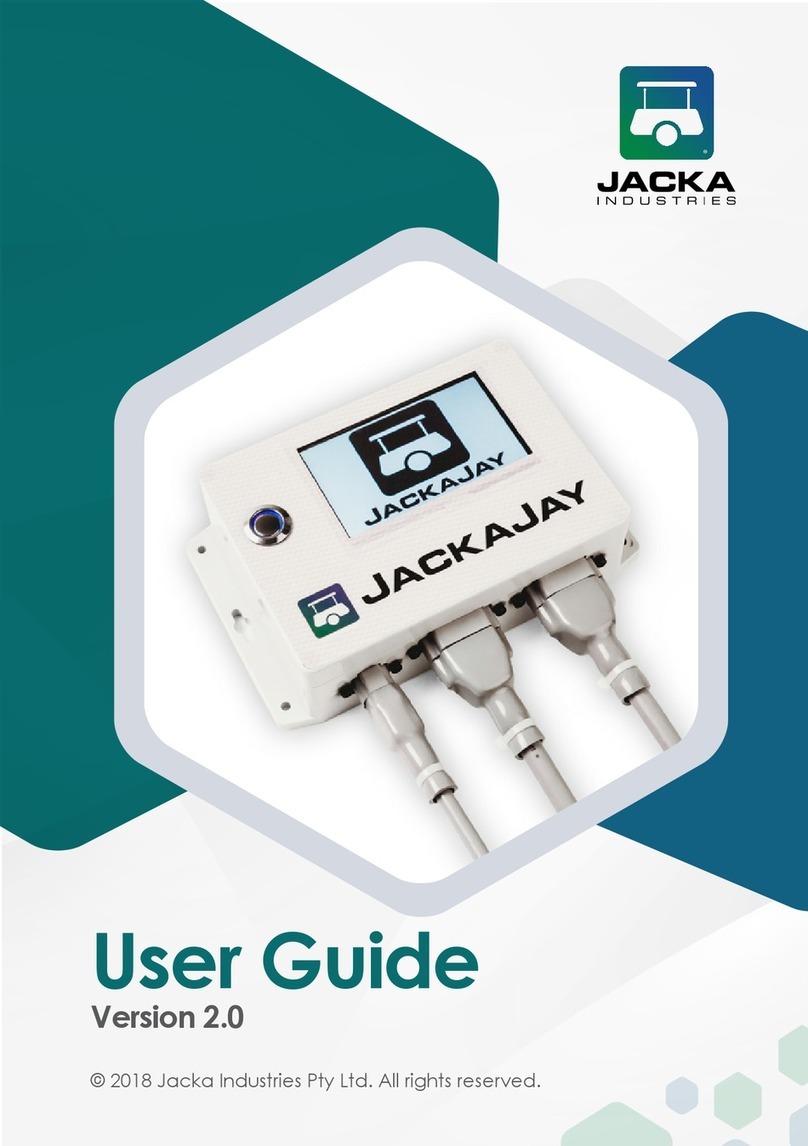
JackaJay INSTALLATION GUIDE
2
Trademarks / Patents
Jacka Industries Pty Ltd are the proprietary owners of all associated registered
trademarks and pending patents.
Patent No. - AU2020 - 050867
Trademark No. - 1998805
Disclaimer
The information provided in this document is provided “as is” without warranty of
any kind. Jacka Industries Pty Ltd disclaims all warranties, either express or implied,
including the warranties of merchantability and tness for a particular purpose. In no
event shall Jacka Industries Pty Ltd be liable for any damages whatsoever including
direct, indirect, incidental, consequential, loss of business prots or special damages,
even if Jacka Industries Pty Ltd or its suppliers have been advised of the possibility of
such damages.
Document Lifetime
Jacka Industries Pty Ltd may occasionally update online documentation between
releases of the related software. Consequently, if this document was not downloaded
recently, it may not contain the most up-to-date information. Please refer to www.
the most current information.
From the Web site, you may also download and refresh this document if it has been
updated, as indicated by a change in this date: 23rd of November 2021
Where to get help
Jacka Industries Pty support, product, and licensing information can be obtained as
follows.
Product information — Documentation, release notes, software updates, and
information about Jacka Industries Pty products, licensing, and service, are at Jacka
Industries Pty website at: http://www.jackaindustries.com
Technical support — Go to http://www.jackaindustries.com and contact a
representative by the provided means.
Your comments
Your suggestions will help us continue to improve the accuracy, organization, and
overall quality of the user publications. Please send your opinion of this document to:
If you have issues, comments, or questions about specic information or procedures,
please include the title and, if available, the part number, the revision, the page
numbers, and any other details that will help us locate the subject that you are
addressing.




























